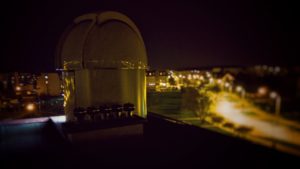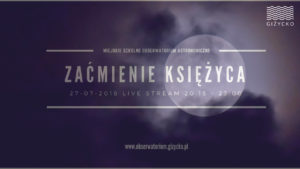Canton is the fellow who updates your astronomy calendar (full moons, equinoxes, etc.) from his laptop in Santa Fe, New Mexico. It’s his birthday today!
The astronomy calendar is an effort of love and no reciprocity is needed or expected, but if you’d like to say thank you for his efforts, then please visit:
https://cantonbecker.com/astronomy-calendar/credits.html

Już jest nowy film pokazujący jak wygląda praca i zajęcia w naszym MSOA.
mówiliśmy już o tym co robimy pod linkiem http://obserwatorium.gizycko.pl/?p=193
Już tuż tuż bo 27.07.2018 od 20:15 na naszym kanale YOUTUBE
Zaćmienie Księżyca potrwa godzinę i czterdzieści pięć minut. Spektakl zacznie się się około 21:30 jeśli pogoda będzie nam przychylna pokażemy państwu całość tego wydarzenia.
W naszym mieście powinniśmy być w stanie zaobserwować całe wydarzenie gołym okiem gdyż o 21:30 księżyc powinien być odpowiednio wysoko nad horyzontem, by był widoczny nad linią drzew czy budynków.
Źródła takie jak portal Astronomia24 podają iż, wschód Księżyca dla terenu Polski nastąpi pomiędzy 20:11 dla miast leżących na wschodzie a 20:46 dla miast na zachodzie naszego kraju. Maksymalna faza zaćmienia całkowitego nastąpi około godziny 22:20.
Wiecej informacji na ten temat znajdziecie państwo pod linkiem https://www.spidersweb.pl/2018/07/calkowite-zacmienie-ksiezyca-2018-lipiec.html
Pozdrawiamy i życzymy miłego seansu
Zespół MSOA
The Quadrantids is an above average shower, with up to 40 meteors per hour at its peak. It is thought to be produced by dust grains left behind by an extinct comet known as 2003 EH1, which was discovered in 2003. The shower runs annually from January 1-5. It peaks this year on the night of the 3rd and morning of the 4th. The moon will be a thin crescent and should not interfere with what could be a good show this year. Best viewing will be from a dark location after midnight. Meteors will radiate from the constellation Bootes, but can appear anywhere in the sky.
Well, happy new year 5 days late. This note is from Canton, the fellow who maintains the astronomical events calendar on your phone or computer. I’ve just added all the meteor showers and grand celestial events for 2019. First up a total lunar eclipse on the 20th of this month!
If you see any errors, let me know and I’ll fix and update the calendar right away. Thanks for watching the skies with me,
– Canton
A total lunar eclipse occurs when the Moon passes completely through the Earth’s dark shadow, or umbra. During this type of eclipse, the Moon will gradually get darker and then take on a rusty or blood red color. The eclipse will be visible throughout most of North America, South America, the eastern Pacific Ocean, western Atlantic Ocean, extreme western Europe, and extreme western Africa.
The two brightest planets, Venus and Jupiter, will appear to have an ultra-close encounter in the evening sky, coming within within 2.4 degrees of each other in the early morning sky. Look for this impressive sight in the east just before sunrise.
